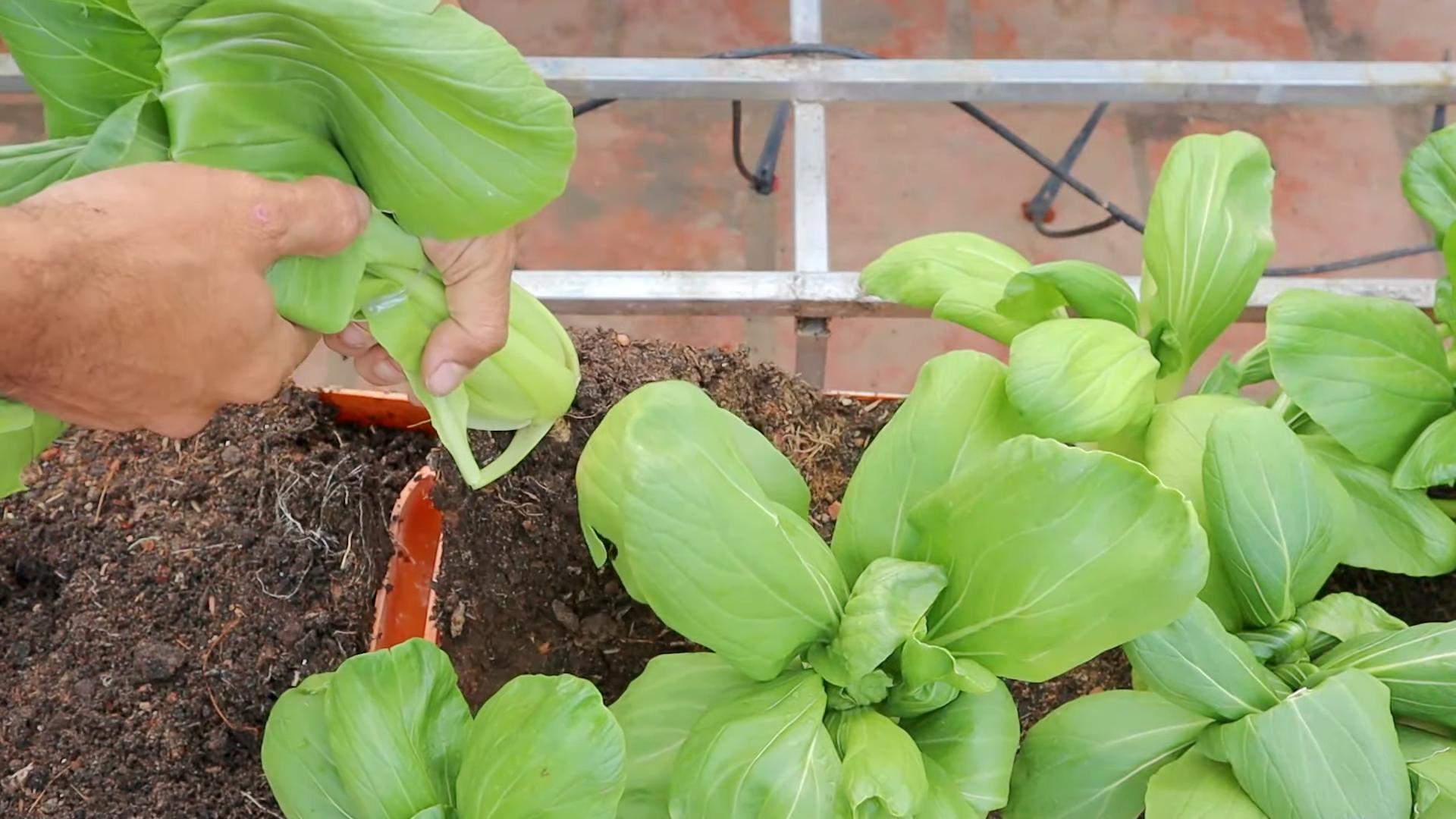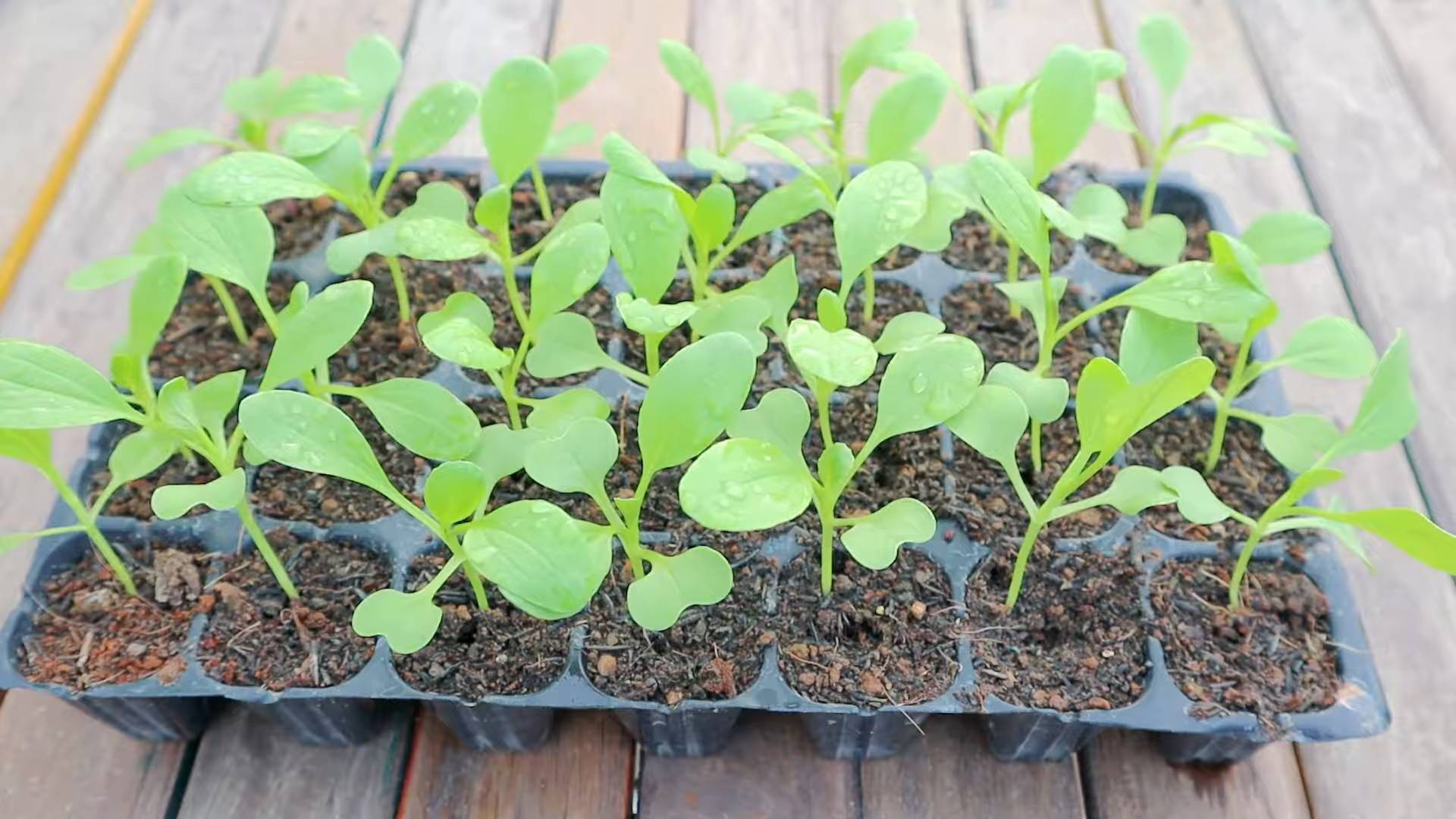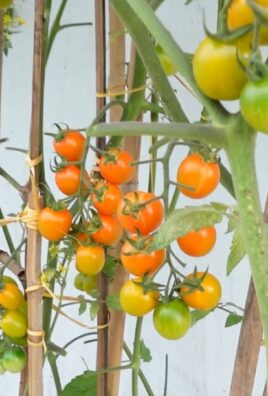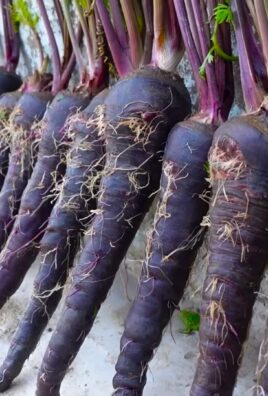Grow Bok Choy at Home? Absolutely! Imagine stepping into your backyard and harvesting fresh, crisp bok choy for a delicious stir-fry or a vibrant salad. It’s easier than you think, and I’m here to show you how with some simple DIY tricks that will transform your garden into a bok choy haven.
Bok choy, also known as pak choi, has been a staple in Asian cuisine for centuries. Originating in China, this nutritious leafy green has made its way into gardens and kitchens worldwide. Its mild, slightly sweet flavor and crisp texture make it incredibly versatile. But beyond its culinary appeal, growing your own bok choy connects you to a rich agricultural heritage.
Why should you bother with these DIY tricks to grow bok choy at home? Well, for starters, you’ll have access to fresher, healthier produce than you can find in most grocery stores. Plus, you’ll know exactly what’s going into your food – no pesticides or harmful chemicals! In today’s world, where we’re all looking for ways to eat healthier and be more self-sufficient, mastering the art of growing your own vegetables is a game-changer. These simple hacks will save you money, reduce your carbon footprint, and give you the satisfaction of nurturing your own food from seed to table. Let’s get started!

Grow Your Own Delicious Bok Choy at Home: A Beginner’s Guide
Hey there, fellow gardening enthusiasts! I’m so excited to share my experience with growing bok choy at home. It’s surprisingly easy, even if you’re a complete newbie like I was when I started. Bok choy, also known as pak choi, is a type of Chinese cabbage that’s packed with nutrients and adds a delightful crunch to stir-fries, soups, and salads. Plus, it grows relatively quickly, so you won’t have to wait forever to enjoy your homegrown harvest.
This guide will walk you through everything you need to know, from choosing the right variety to harvesting your bounty. Let’s get started!
Choosing the Right Bok Choy Variety
First things first, let’s talk about varieties. There are several types of bok choy, each with its own unique characteristics. Here are a few popular options:
* Shanghai Bok Choy: This variety has light green stems and spoon-shaped leaves. It’s known for its mild flavor and tender texture. I personally love this one because it’s so versatile in the kitchen.
* Baby Bok Choy: As the name suggests, this is a smaller version of regular bok choy. It’s perfect for single servings and has a slightly sweeter taste.
* Dwarf Bok Choy: Similar to baby bok choy, but even smaller! These are great for container gardening or small spaces.
* Mei Qing Choi: This variety has a more upright growth habit and dark green leaves. It’s known for its heat tolerance, making it a good choice for warmer climates.
I recommend starting with Shanghai or Baby Bok Choy, as they’re generally easier to grow and widely available.
Getting Started: Seeds vs. Seedlings
You have two options when it comes to starting your bok choy: seeds or seedlings.
* Seeds: Starting from seeds is more economical and gives you more control over the growing process. However, it requires a bit more patience and attention.
* Seedlings: Buying seedlings from a nursery is a quicker and easier option, especially if you’re short on time or space.
I’ve tried both methods, and I personally prefer starting from seeds. It’s just so rewarding to watch those tiny sprouts emerge from the soil!
Planting Your Bok Choy
Okay, now for the fun part: planting!
Timing is Key
Bok choy is a cool-season crop, which means it thrives in cooler temperatures. The best time to plant is in early spring or late summer/early fall. Avoid planting during the hottest months of summer, as the heat can cause the plants to bolt (go to seed prematurely).
Preparing the Soil
Bok choy prefers well-drained, fertile soil with a pH of 6.0 to 7.5. Before planting, amend the soil with compost or other organic matter to improve drainage and nutrient content. I like to add a generous amount of compost to my garden beds before planting anything.
Planting Seeds
1. Sow seeds directly into the garden about 1/4 to 1/2 inch deep and 1 inch apart.
2. Gently cover the seeds with soil and water thoroughly.
3. Keep the soil consistently moist until the seeds germinate, which usually takes about 5-7 days.
4. Once the seedlings emerge, thin them out to about 6-8 inches apart. This will give them enough space to grow and mature.
Planting Seedlings
1. Dig holes that are slightly larger than the root balls of the seedlings.
2. Gently remove the seedlings from their containers and loosen the roots.
3. Place the seedlings in the holes and backfill with soil.
4. Water thoroughly after planting.
5. Space the seedlings about 6-8 inches apart.
Caring for Your Bok Choy
Once your bok choy is planted, it’s important to provide it with the right care to ensure a healthy and abundant harvest.
Watering
Bok choy needs consistent moisture to thrive. Water regularly, especially during dry periods. Aim to keep the soil evenly moist, but not waterlogged. I usually water my bok choy every other day, or more frequently if the weather is hot and dry.
Fertilizing
Bok choy is a heavy feeder, so it benefits from regular fertilization. I like to use a balanced organic fertilizer, such as fish emulsion or compost tea, every 2-3 weeks. Follow the instructions on the fertilizer package for proper application rates.
Weeding
Keep the area around your bok choy plants free of weeds. Weeds compete with the plants for nutrients and water, and they can also harbor pests and diseases. I like to hand-pull weeds regularly to keep my garden beds clean.
Pest Control
Bok choy can be susceptible to certain pests, such as aphids, flea beetles, and cabbage worms. Here are a few tips for controlling pests:
* Inspect your plants regularly for signs of pests.
* Hand-pick pests off the plants whenever possible.
* Use insecticidal soap or neem oil to control aphids and other soft-bodied insects.
* Cover your plants with row covers to prevent pests from reaching them.
* Introduce beneficial insects, such as ladybugs and lacewings, to your garden to help control pests naturally.
Dealing with Bolting
As I mentioned earlier, bok choy can bolt (go to seed prematurely) in hot weather. Bolting can make the leaves bitter and less palatable. Here are a few tips for preventing bolting:
* Plant bok choy in early spring or late summer/early fall to avoid the hottest months of summer.
* Provide shade for your plants during the hottest part of the day.
* Water regularly to keep the soil cool and moist.
* Choose bolt-resistant varieties, such as Mei Qing Choi.
If your bok choy does start to bolt, you can still harvest the leaves and use them in stir-fries or soups. Just be aware that they may have a slightly bitter taste.
Harvesting Your Bok Choy
The moment you’ve been waiting for: harvesting! Bok choy is typically ready to harvest about 45-50 days after planting.
When to Harvest
You can harvest bok choy at any stage of growth, depending on your preference. For baby bok choy, harvest when the plants are about 4-6 inches tall. For larger bok choy, harvest when the heads are firm and compact.
How to Harvest
1. Use a sharp knife or scissors to cut the bok choy at the base of the plant.
2. Leave the roots in the ground, as they may produce new shoots.
3. Wash the bok choy thoroughly before using.
Storing Your Harvest
Bok choy can be stored in the refrigerator for up to a week. To keep it fresh, wrap it in a damp paper towel and store it in a plastic bag.
Enjoying Your Homegrown Bok Choy
Now that you’ve harvested your bok choy, it’s time to enjoy the fruits (or rather, vegetables) of your labor! Bok choy is incredibly versatile and can be used in a variety of dishes. Here are a few of my favorite ways to use it:
* Stir-fries: Bok choy is a classic ingredient in stir-fries. Simply chop it up and add it to your favorite stir-fry recipe.
* Soups: Bok choy adds a delicious crunch and flavor to soups. Add it to your favorite soup recipe during the last few minutes of cooking.
* Salads: Baby bok choy can be used in salads. Its tender leaves and mild flavor make it a great addition to any salad.
* Steamed: Steamed bok choy is a simple and healthy side dish. Steam it until it’s tender-crisp and season with salt, pepper, and a drizzle of sesame oil.
* Grilled: Grilled bok choy is a delicious and smoky side dish. Grill it until it’s slightly charred and season with salt, pepper, and a squeeze of lemon juice.
Troubleshooting
Even with the best care, you might encounter some challenges while growing bok choy. Here are a few common problems and how to address them:
* Yellowing Leaves: This can be caused by overwatering, underwatering, or nutrient deficiencies. Adjust your watering schedule and fertilize your plants regularly.
* Holes in Leaves: This is often caused by pests, such as flea beetles or cabbage worms. Inspect your plants regularly and use appropriate pest control methods.
* Bolting: As mentioned earlier, bolting can be caused by hot weather. Plant bok choy in early spring or late summer/early fall and provide shade during the hottest part of the day.
*

Conclusion
So, there you have it! Growing your own bok choy at home is not only achievable, but it’s also incredibly rewarding. From the crisp, fresh taste that surpasses anything you’ll find in the grocery store to the sheer satisfaction of nurturing a plant from seed to harvest, this DIY project is a game-changer for any home cook or gardening enthusiast. Forget those wilted, overpriced heads of bok choy – with a little effort and these simple steps, you can have a constant supply of this nutritious and versatile vegetable right at your fingertips.
But the benefits extend beyond just fresh produce. Think about the environmental impact of reducing your reliance on commercially grown and transported vegetables. You’re cutting down on your carbon footprint and supporting a more sustainable lifestyle. Plus, gardening is a fantastic stress reliever! Spending time tending to your bok choy patch can be a calming and meditative experience, a welcome escape from the hustle and bustle of daily life.
And don’t think you’re limited to just one type of bok choy. Experiment with different varieties! Try growing baby bok choy for its delicate flavor and tender leaves, or opt for the larger Shanghai bok choy for its heartier texture. You can even explore colorful varieties like red bok choy to add visual appeal to your garden and your plate. Consider companion planting as well. Marigolds can help deter pests, while herbs like dill and cilantro can attract beneficial insects.
Ready to take the plunge and grow bok choy at home? We encourage you to give it a try! Start small, follow our guide, and don’t be afraid to experiment. The beauty of gardening is that there’s always something new to learn. And once you’ve tasted the difference between homegrown bok choy and store-bought, you’ll never go back.
We’re confident that you’ll find this DIY project to be both enjoyable and fruitful. So, grab your seeds, prepare your soil, and get ready to harvest your own delicious bok choy. And most importantly, don’t forget to share your experiences with us! We’d love to hear about your successes, your challenges, and any tips or tricks you discover along the way. Post photos of your bok choy garden, share your favorite recipes, and let’s build a community of home-growing enthusiasts. Happy gardening!
Frequently Asked Questions (FAQ)
What is the best time of year to plant bok choy?
Bok choy is a cool-season crop, meaning it thrives in cooler temperatures. The best time to plant bok choy is in early spring or late summer/early fall. For a spring crop, start seeds indoors 4-6 weeks before the last expected frost. For a fall crop, sow seeds directly into the garden in late summer, about 6-8 weeks before the first expected frost. Avoid planting during the hottest months of summer, as high temperatures can cause bolting (premature flowering), which makes the leaves bitter.
How much sunlight does bok choy need?
Bok choy needs at least 4-6 hours of sunlight per day. While it can tolerate some shade, especially during the hottest part of the day, insufficient sunlight can result in leggy growth and reduced yields. Choose a location in your garden that receives ample sunlight, particularly in the morning. If you’re growing bok choy indoors, use grow lights to supplement natural sunlight and ensure adequate light exposure.
What kind of soil is best for growing bok choy?
Bok choy prefers well-drained, fertile soil that is rich in organic matter. The ideal soil pH is between 6.0 and 7.5. Before planting, amend your soil with compost, aged manure, or other organic materials to improve drainage, fertility, and water retention. If your soil is heavy clay, consider adding sand or perlite to improve drainage. A soil test can help you determine the pH and nutrient levels of your soil and guide you in making necessary amendments.
How often should I water bok choy?
Bok choy needs consistent moisture to thrive. Water deeply and regularly, especially during dry periods. Aim to keep the soil consistently moist but not waterlogged. Overwatering can lead to root rot, while underwatering can cause the leaves to wilt and become tough. A good rule of thumb is to water when the top inch of soil feels dry to the touch. Mulching around your bok choy plants can help retain moisture and suppress weeds.
What are some common pests and diseases that affect bok choy?
Bok choy is susceptible to several common garden pests and diseases, including aphids, cabbage worms, flea beetles, and downy mildew. To prevent pest infestations, inspect your plants regularly and remove any pests you find by hand. You can also use insecticidal soap or neem oil to control pests. To prevent diseases, ensure good air circulation around your plants and avoid overhead watering. If you notice signs of disease, such as yellowing leaves or white powdery mildew, remove the affected leaves and treat the plants with a fungicide. Crop rotation can also help prevent soilborne diseases.
How do I harvest bok choy?
You can harvest bok choy at any stage of growth, depending on your preference. For baby bok choy, harvest when the leaves are about 4-6 inches long. For mature bok choy, harvest when the heads are firm and compact, typically about 6-8 weeks after planting. To harvest, cut the entire head of bok choy at the base of the plant with a sharp knife. You can also harvest individual leaves as needed, starting with the outer leaves.
Can I grow bok choy in containers?
Yes, bok choy can be successfully grown in containers. Choose a container that is at least 12 inches deep and wide to allow ample room for root growth. Use a well-draining potting mix and ensure that the container has drainage holes. Place the container in a location that receives at least 4-6 hours of sunlight per day. Water regularly and fertilize every 2-3 weeks with a balanced fertilizer. Container-grown bok choy may need more frequent watering than bok choy grown in the ground.
How do I store bok choy after harvesting?
To store bok choy after harvesting, rinse it thoroughly and pat it dry. Wrap the bok choy in a paper towel and place it in a plastic bag in the refrigerator. Bok choy can be stored in the refrigerator for up to a week. Avoid storing bok choy near ethylene-producing fruits, such as apples and bananas, as this can cause the leaves to yellow and wilt.
Can I eat the entire bok choy plant?
Yes, the entire bok choy plant is edible, including the leaves, stems, and flowers. The leaves are the most commonly consumed part of the plant, but the stems are also delicious and can be used in stir-fries, soups, and salads. The flowers are also edible and have a mild, slightly sweet flavor.
What are some ways to use bok choy in cooking?
Bok choy is a versatile vegetable that can be used in a variety of dishes. It can be stir-fried, steamed, boiled, grilled, or added to soups and salads. Bok choy pairs well with Asian flavors, such as soy sauce, ginger, garlic, and sesame oil. It can also be used in Western dishes, such as quiches, frittatas, and gratins. Some popular bok choy recipes include stir-fried bok choy with garlic, bok choy soup, and grilled bok choy with sesame dressing.




Leave a Comment